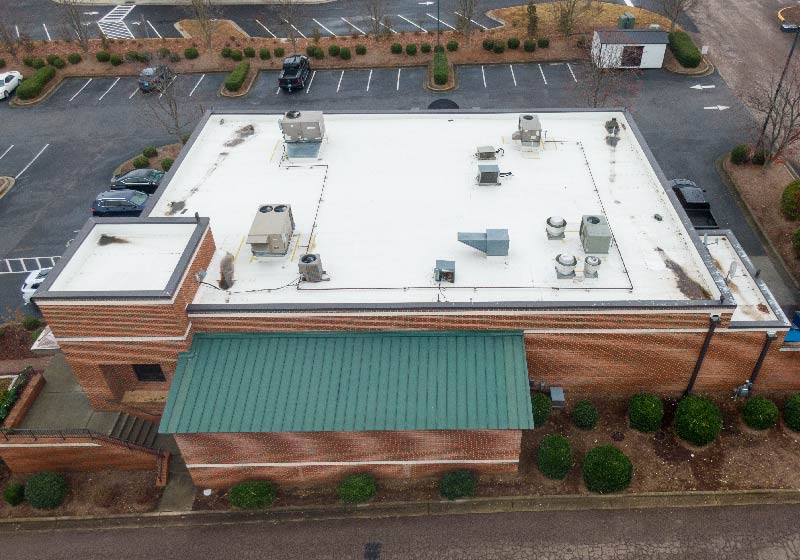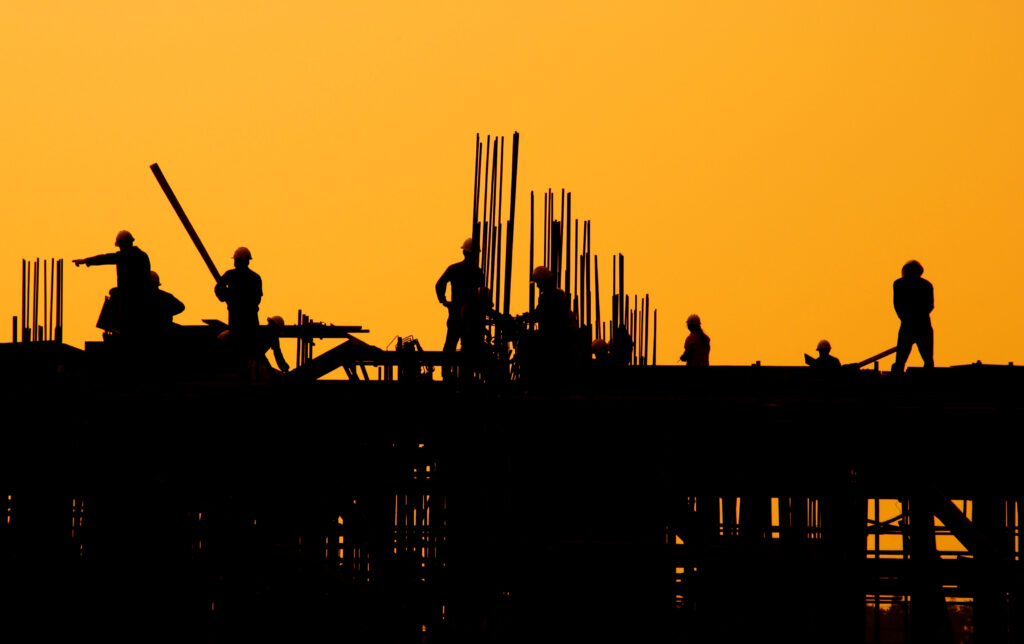From an inspector’s perspective, residential and commercial properties are actually pretty similar to work on. Both properties have the same major concerns such as the water management, the functionality of its electrical systems, and overall structural stability. Commercial properties may be a bit bigger and more complex than your usual residential property, but an inspector’s process will largely be the same regardless of the type of building.
With all of that said, there are a few features common to commercial buildings that are a rarity in the residential sector – features that have their own benefits and their own drawbacks. Today, let’s discuss one of those features that are nearly ubiquitous on commercial properties. That feature? Flat roofs.
Why Are Flat Roofs Common in Commercial But Not Residential?
Whether we’re talking about apartments, office buildings, or warehouses, flat roofing options are consistently a top choice by builders for a couple of reasons:
1. They’re easy to install and they require fewer materials than sloped roofs. Flat roofs are simple and, outside of the logistical issues that come with installing pitched roofs on larger buildings, the reduced cost and time of installation makes them a great choice for real estate developers.
2. They add space for essential systems namely for HVAC units! Commercial properties require heftier HVAC systems due to their larger size, and the large, flat spaces that roofs can offer are a preferred placement choice. Flat roofs can also house other systems like solar panels or comms equipment, and some properties may even use the extra space for a rooftop common area, or community greenery.
3. They’re easier to maintain since flat surfaces are safer to traverse than sloped roofs. All roofs should be frequently inspected and cared for by following a preventative maintenance routine if property owners and managers want their roofs to reach their intended lifespan. Flat roofs allow maintenance professionals easy access to perform their jobs.
Flat roofs tend to be the perfect choice for most commercial properties for these reasons and others, but many of these benefits aren’t present in the residential sector. Residential properties tend to prefer pitched roofing options thanks to how they aid water run-off, and homeowners prefer the storage space that attics provide rather than the flat space for unnecessarily large HVAC units.
Additionally, while pitched roofs are more difficult to traverse, homeowners don’t mind the tougher roof access since pitched roofs require maintenance less frequently. In short, neither roofing option is superior across the board. Rather, flat roofs and pitched roofs each have their place in the real estate landscape.
Solving the Drainage Problem
Now that we’ve discussed why there’s a different level of prominence of flat roofs outside of CRE, let’s review the unique concerns that property owners and managers need to be aware of when maintaining their flat roofs. The first concern is – just like with all buildings – water management.
As you might be aware, residential roofs tend to be sloped, which allows rainwater to run off away from the roof and, ideally, away from the property’s foundation via gutters and downspouts. Now, you might assume that flat roofs have a problem with water because, well, they’re flat, and they don’t have the benefit of gravity to remove moisture. But the dirty little secret of commercial real estate is that flat roofs are not, in fact, flat.
Commercial flat roofs will always have a slight slope which varies depending on its drainage strategy:
1. Flat roofs slope to one end, directing water to a gutter system. Since commercial roofs tend to be quite large, this option isn’t commonly seen on its own.
2. Flat roofs slope towards all outer edges and rely on scuppers to direct water. Scuppers are often incorporated into the commercial building’s design like in parapet walls. While scuppers don’t tend to clog, they are thought to be susceptible to freezing and may not be ideal for regions that face harsh winters.
3. Lastly, flat roofs sometimes slope inwards towards a drain within the roof. This drainage solution is sometimes thought to be the weakest option due to the possibility of clogging, as well as maintenance and repair costs.
When drainage systems aren’t working properly on flat roofs, ponding water can form, which can create a considerable weight strain on the roof. Unaddressed standing water can lead to so many issues. For example, you can expect leaks into the building, mold and algae development, and even sagging or sloping roof structure.
Other things that can exacerbate the potential for interior leaks include roof membrane punctures from weather, debris, or animal activity, natural structural movement, shrinkage due to temperature change, and (of course) maintenance neglect.
Standing Up to Sunbeams
On the opposite end of the spectrum, flat roofs run into plenty of problems when they are too dry as well. Just like how our skin tends to tan and burn due to overexposure to the sun, the membrane of a flat roof will tire from constant subjection to sunbeams. Over time, flat roofs can wrinkle and crack, eventually going through a process known as “Alligatoring” where the surface comes to resemble alligator skin.
Patching and small-scale replacement is recommended if UV degradation is caught early on, but when left unaddressed this condition will lead to even more opportunities for leaks and damage.
With the right knowledge and regular inspections, flat roofing systems can last up to 30 years. To get the most value out of your flat roof, and to limit downtime (and some heartache), give NPI a call for your next commercial inspection!



